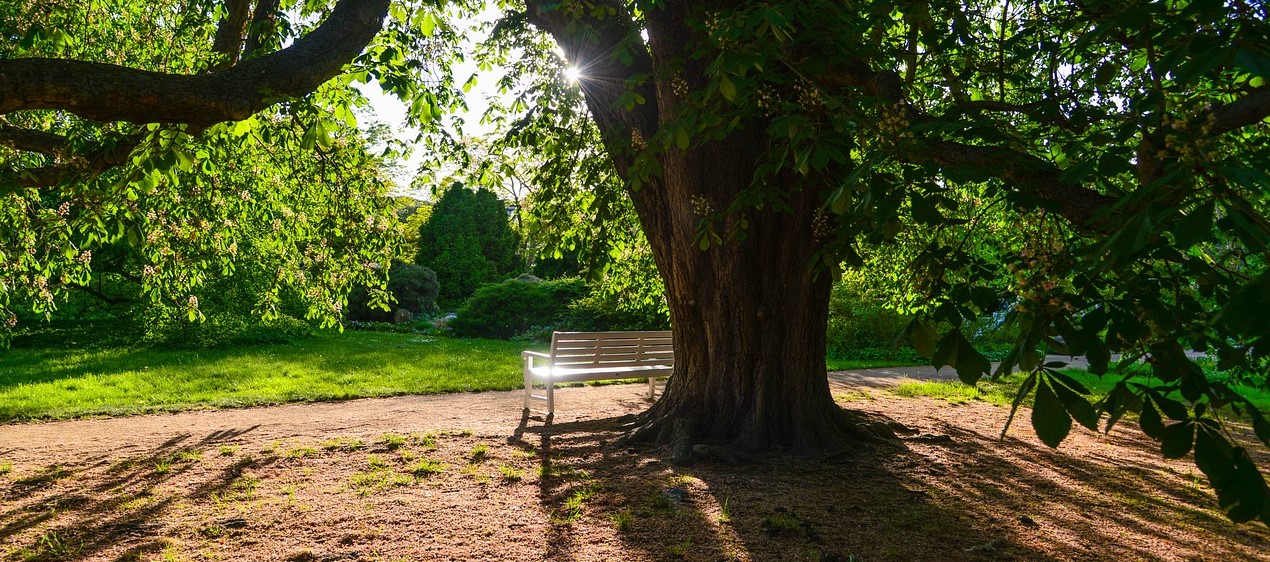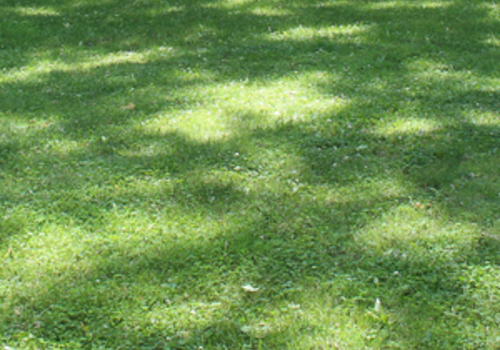
We’re all trying to create the most beautiful garden we can with the space available to us. One filled with blooming flowers and lush, green grass. Sometimes though, it feels like our garden doesn’t want to cooperate with these plans.
However, you absolutely can grow beautiful grass in shaded areas right across the UK. It just takes a few extra steps and making sure you have the correct shade tolerant grass seed.
When sowing grass seed in shady areas it requires shade tolerant grass seed which is specially designed to thrive in low sunlight conditions.
A shade tolerant grass is a carefully formulated grass seed mixture designed specifically for shaded areas. Shade tolerant grass seed allows for a high-quality, luscious lawn even in shaded areas. In this blog, we share everything you need to know to grow a beautiful lawn even in shaded areas.
Why do I need to use shade tolerant grass seed?
Shaded areas in your garden can be especially tricky to grow grass. If you’re looking to grow grass underneath trees, or by hedgerows, you have to deal with your grass competing for nutrients with trees in the low-sunlight. When looking to grow grass that is shaded by buildings, you face the issue of overly moist soil because of the low air circulation, hence the need for a specifically formulated grass seed mixture.
What is the best grass seed for shady areas?
We have found the most effective shady lawn grass mix is a blend of shade-tolerant grass varieties. Which grass seed you need for shaded areas will depend on where your shaded areas are. At Boston Seeds, our shady place grass seed mixture produces a lush, green lawn in areas of low sunlight conditions.
Grass seed for shade under trees or hedgerows
Grass seed for shade under trees or hedgerows must be able to grow in low moisture and nutrient environments. This is because your grass will be competing with trees for water and nutrients from the soil, and have limited sunlight. Our Shady Place Grass Seed is the perfect mix of hardy grass varieties that grow well despite these conditions.
Grass seed for shaded areas around buildings
Grass seeds for shaded areas around buildings will need to contend with low air-circulation and drainage which causes waterlogged soil that invites rot and fungi. Our Child’s Play lawn seed is an extremely hardy, more suitable seed mix for these kinds of shady areas.
What do you do when grass won’t grow under trees?
Growing grass in shaded areas requires some extra care and attention. If you find that despite your best efforts your grass simply isn’t growing, there may be some other factors to take into account. We’ve put together some tips on what to do when your grass isn’t growing as it should.
Cut back overhanging branches
Where possible it helps to cut back low or overhanging branches. This increases the sunlight that grass can get. Many grass varieties need three to four hours of sunlight a day to truly thrive. Pay particular attention to this with dense trees like Oak and Beech, which can block almost 95% of sunlight in the summer.
Reduce soil acidity
Sometimes, your grass might not be growing due to the acidity of the soil. Certain tree varieties can increase soil acidity, so adding lime can help neutralise this and encourage your grass to grow. Changing the acidity can impact surrounding trees and vegetation so be especially careful about this.
Aerate the soil
If the soil looks especially hard or compact, there is a chance soil may need aerating. If so, use a garden fork to aerate the area. This will help water, nutrients and air penetrate into the soil to give your seeds a better chance.
Ensure you’ve used shady grass seed
Another key area to look at is what type of grass is planted in your shady areas. If you have previously planted grass varieties that aren’t hardy enough for shady areas, you may notice bare patches and thinning where the grass cannot get the nutrients and light it needs. It is best to take this opportunity to reseed these areas with a shady lawn seed mix.
What type of grass will grow under trees?
One variety we use in both our Shady Place Grass Seed and Child’s Play lawn seed is Chewings Fescue. This subspecies of grass was originally cultivated in New Zealand and has since become an incredibly popular grass seed across Europe because of its density, resilience, and ability to grow in low-fertility areas.
The main grass type in our Shady Grass Seed which is perfect for shaded areas under trees, is Red Fescue. It is known for growing quickly and covering a lot of ground and has become a preferred choice when landscaping tough spots. Red Fescue is often used on golf courses as it can grow well even in sandy soil.
Once you have decided what type of grass seeds you need, you can use our handy grass seed calculator to work out just how much seed you’ll require.
Tips for growing grass in shaded areas
When should you seed your lawn with shade?
The optimal time to sow grass seed in shaded areas is between the late summer and the mid-autumn. During this time there is less competition from weeds and the soil has had a chance to reach its optimum temperature so it's still warm and will be retaining a good amount of moisture. These are all helpful factors to encourage growth in your grass seed for shaded areas.
If you’ve already missed the autumn, then seed in mid-spring but make sure you’re going to be able to give the new grass plenty of water as the hot weather really starts to set in.
Summer is often too hot, and dry for new seeds to be able to thrive and they will often end up shriveling. In winter, it's often too cold for regular grass seeds to germinate.
When you do begin to seed your lawn, we recommend sowing at 35 grams per sq/m. For best results use a pre-seeding fertiliser to prepare the soil and a grass seed spreader to make sure grass seeds are distributed evenly.
Will new grass thicken on its own?
Grass will begin to thicken on its own, especially the varieties we use to mix our shady lawn seed, but there are still plenty of ways for you to help encourage growth.
How to encourage grass in shaded areas to grow?
Keep your grass seed in the shade moist as you would with any new grass seedlings, try to keep your shaded grass moist by watering it once or twice a day until it is tall enough to mow. If you are growing seed in a moist area, it’s important to make sure there is irrigation for the water to drain.
When the grass is tall enough to mow, you can water it on the same schedule as the rest of your grass. When you do water it though, it helps to be a bit more generous to grass growing in the shade. This is especially true for grass growing underneath trees as they’ll be competing with the trees for water and nutrients.
Let the shaded grass grow slightly taller. A final tip is to let the grass in shaded areas grow a little taller. This gives the grass more blade surface to capture and process what sunlight is available, and encourages deeper root growth which aids resilience.
Trying to deal with shaded areas can seem like a troublesome gardening endeavor, but we hope we’ve shown you it’s completely possible to grow a full, beautiful lawn with the right grass and a few simple steps!
---------
How we can help!
At Boston Seeds we take pride in excellent customer service. If you're growing a lawn from scratch but unsure how much grass seed you need, our handy Grass Seed Calculator can help you figure it out in just a few clicks!
With Next Day Delivery on hundreds of items too, choosing from our extensive range of grass seed couldn't be easier. Ordering regularly or looking for large volumes? Click here to apply for a trade account today - we review all applications within one working day. If you have any questions, then please get in touch.
